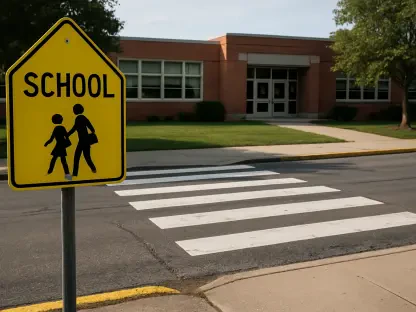As the new school year unfolds across Florida, a stark divide emerges between state leadership and educators over the true condition of public education, raising critical questions about funding, staffing, and student outcomes that impact the future of countless students. Governor Ron DeSantis touts significant financial investments and policy reforms as evidence of progress, painting an optimistic picture of a system on the rise. Meanwhile, the Florida Education Association (FEA), the state’s largest teachers’ union, counters with a sobering assessment, pointing to systemic shortages and budget cuts that they argue are undermining schools. This clash of perspectives not only highlights differing interpretations of data but also reflects a deeper tension over how best to address the challenges facing Florida’s classrooms. With students and teachers at the heart of this debate, the stakes couldn’t be higher as both sides push their narratives on what the future of education should look like.
Perspectives on Educational Progress
Governor DeSantis’ Optimistic Outlook
Governor Ron DeSantis has taken a firm stance on the advancements in Florida’s education system, emphasizing substantial state investments as a cornerstone of improvement. Speaking recently at a civic center in Melbourne, he highlighted a $150 million boost in the latest budget for teacher salary increases, bringing total funding for educator compensation to an impressive $1.38 billion. This financial commitment, according to DeSantis, underscores the state’s dedication to supporting teachers and enhancing classroom environments. Beyond funding, he pointed to reforms like progress monitoring, which he believes have gained widespread approval for effectively tracking student performance and school accountability. These measures, in his view, are pivotal in ensuring that educational outcomes continue to improve, providing a clear path forward for students across the state. DeSantis also signaled plans to prioritize education further in the upcoming legislative session, suggesting that more resources and innovative policies are on the horizon to bolster the system.
The focus on measurable results forms a key part of DeSantis’ narrative, as he argues that data reflects tangible progress in Florida’s schools. By emphasizing increased funding and structured reforms, the governor aims to build public confidence in the direction of public education. His administration’s approach leans heavily on the idea that strategic investments and policy adjustments can address longstanding issues, creating a stable foundation for future growth. While acknowledging that challenges remain, DeSantis presents these efforts as evidence of a system moving in the right direction, with teacher support and student success as top priorities. This perspective seeks to shift the conversation toward optimism, framing current policies as building blocks for sustained improvement rather than temporary fixes. The emphasis on legislative momentum also hints at a broader vision, one that could potentially reshape educational priorities in Florida for years to come.
FEA’s Critical Assessment of Systemic Issues
In sharp contrast to the governor’s outlook, the Florida Education Association, under President Andrew Spar, offers a critical view of the state of public education, focusing on deep-rooted challenges that they believe are being overlooked. While recognizing a reported 17% reduction in teacher vacancies as per state data, the union argues that this statistic masks a troubling reality. They attribute the decrease not to improved conditions but to severe budget cuts that have forced school districts to eliminate thousands of positions, cut essential programs, and increase class sizes. Furthermore, the reliance on uncertified educators has become a pressing concern, with over half of newly hired teachers holding temporary certificates without completing formal preparation programs. This, the FEA contends, compromises the quality of education and places undue strain on both students and staff, highlighting a system stretched to its limits.
Beyond teacher shortages, the FEA points to a broader crisis in school staffing, including deficits in bus drivers, paraprofessionals, and maintenance workers, all of whom play vital roles in the educational ecosystem. These gaps, coupled with declining reading and math scores as well as poor SAT results, paint a grim picture of student outcomes suffering under current conditions. The union also notes that Florida teachers rank last nationally in average salary, a statistic that exacerbates retention issues and discourages new talent from entering the profession. According to Spar, the burden of inadequate funding falls squarely on students, who face larger classes and fewer resources. This narrative challenges the notion of progress, urging a closer look at the day-to-day realities in schools where systemic inequities persist despite reported financial increases, and calls for a reevaluation of how resources are allocated to truly support education.
Broader Implications and Future Challenges
The Divide in Data Interpretation
A fundamental disagreement between Governor DeSantis and the FEA lies in how each interprets key data points, revealing a profound disconnect in their visions for Florida’s schools. On one hand, DeSantis focuses on the positive, citing increased funding and reduced teacher vacancies as proof of advancement, framing these as stepping stones to better educational outcomes. His administration’s reliance on metrics like budget allocations and progress monitoring systems aims to provide a quantifiable measure of success, appealing to those who prioritize accountability and results. This approach suggests that with continued investment and policy refinement, the state can overcome its challenges, positioning Florida as a leader in educational reform. However, this optimistic interpretation often glosses over the practical difficulties faced by educators on the ground, creating a narrative that may not fully align with classroom realities.
On the other hand, the FEA’s analysis of the same data paints a starkly different picture, emphasizing the negative consequences of budget cuts and staffing shortages that they argue undermine any reported progress. The union’s perspective highlights how a reduction in vacancies often results from eliminated positions rather than filled roles, leading to overcrowded classrooms and overworked staff. Their focus on the prevalence of uncertified teachers and declining student performance metrics challenges the notion that financial investments alone can solve systemic issues. This critical stance underscores a broader concern about equity and quality in education, suggesting that without addressing root causes like low teacher pay and insufficient support staff, true improvement remains elusive. The divide in interpretation reflects not just differing priorities but also a deeper ideological rift on what constitutes success in public education.
Navigating the Path Forward
Looking ahead, the ongoing tension between political leadership and educators’ unions in Florida mirrors national debates over how to best support public schools, raising questions about sustainable solutions. Both DeSantis and the FEA agree on the need for further action, yet their approaches diverge significantly, with the governor advocating for policy-driven progress and the union pushing for immediate resource allocation to address classroom crises. Bridging this gap will require a nuanced dialogue that moves beyond competing narratives to focus on actionable strategies, such as targeted funding for underserved districts and incentives for teacher certification programs. Addressing shortages in support staff and improving working conditions could also serve as common ground for collaboration, ensuring that schools are equipped to meet student needs effectively.
Reflecting on past efforts, it’s evident that the clash between these two perspectives underscored a critical moment in Florida’s educational history, where data became a battleground for competing truths. Finding a resolution demanded innovative thinking, such as exploring public-private partnerships to supplement funding or implementing mentorship programs for uncertified teachers to enhance their skills. Additionally, prioritizing student outcomes through smaller class sizes and updated curricula offered a potential pathway to reconcile differing views. As discussions unfolded, the focus shifted toward long-term investments in educator training and retention, recognizing that a well-supported workforce was essential for lasting change. These steps, though challenging, pointed to a future where consensus might be possible, balancing fiscal responsibility with the urgent needs of students and teachers alike.









